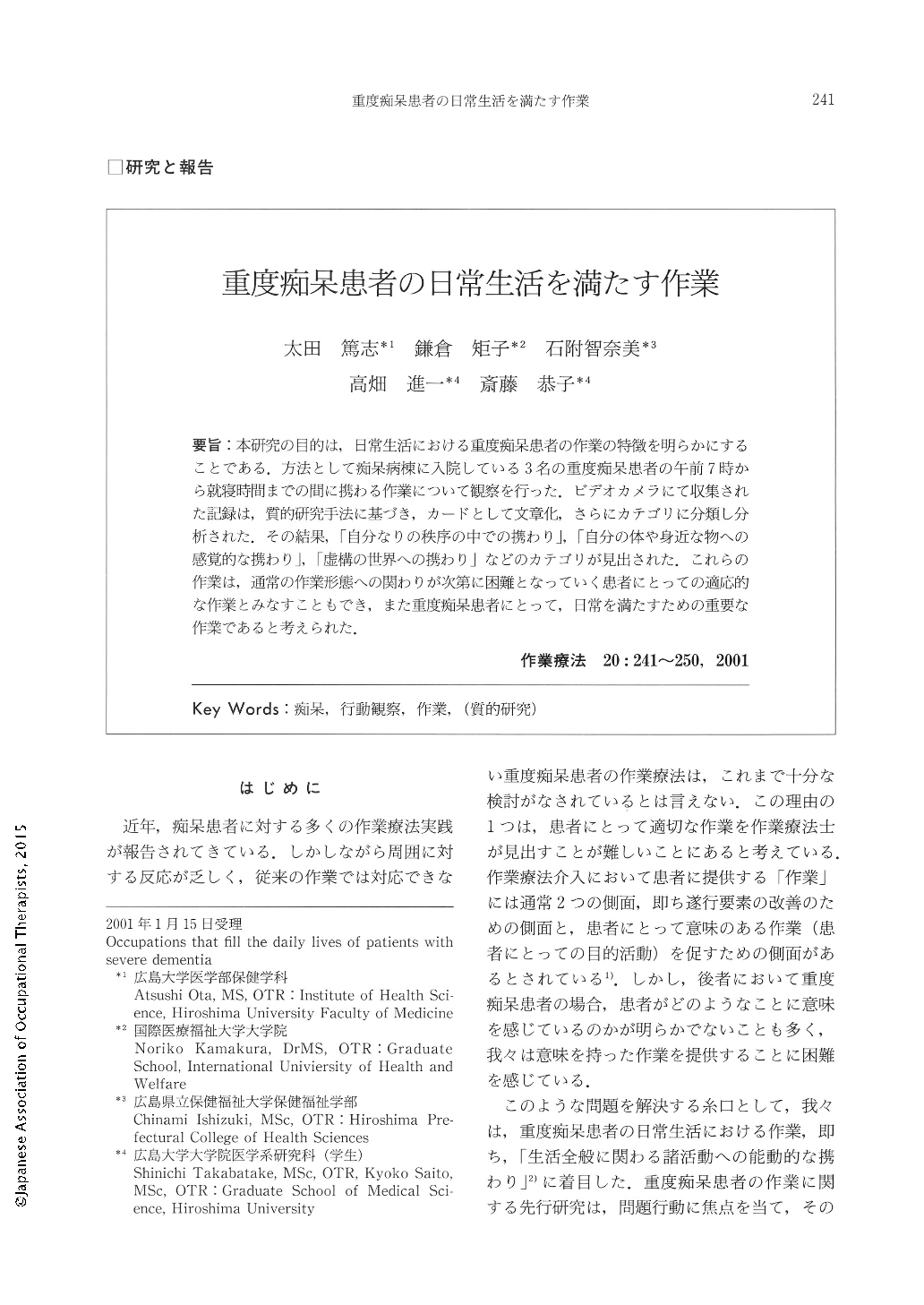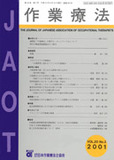Japanese
English
- 販売していません
- Abstract 文献概要
- 1ページ目 Look Inside
- 参考文献 Reference
- サイト内被引用 Cited by
要旨:本研究の目的は,日常生活における重度痴呆患者の作業の特徴を明らかにすることである。方法として痴呆病棟に入院している3名の重度痴呆患者の午前7時から就寝時間までの間に携わる作業について観察を行った.ビデオカメラにて収集された記録は,質的研究手法に基づき,カードとして文章化,さらにカテゴリに分類し分析された.その結果,「自分なりの秩序の中での携わり」,「自分の体や身近な物への感覚的な携わり」,「虚構の世界への携わり」などのカテゴリが見出された.これらの作業は,通常の作業形態への関わりが次第に困難となっていく患者にとっての適応的な作業とみなすこともでき,また重度痴呆患者にとって,日常を満たすための重要な作業であると考えられた.
The purpose of this study is to clarify the characteristics of daily activities of patients with severe dementia. In this study, an observational survey was conducted on the occupations, defined as "voluntary action without any urging by others," of three patients with severe dementia, who were admitted to the hospital ward for dementia. The observation was carried out by videotaping their behaviors from 7:00 a.m. to bedtime. The collected record was transcribed and classified by behavior. After analyzing the occupations with a qualitative research method, categories, including "perseverative patterned action," "sensory stimulating action," and "pseudo-responsive actions," were defined. It is difficult for an observer to understand the meaning and purpose of the patients' occupations, and yet, these behaviors can be considered adaptive behaviors of those who gradually found it difficult to get involved in normal occupational activities. In other words, these behavior patterns are important for dementia patients to fulfill their daily lives. These results may help to get patients involved in purposeful activities in occupational therapy.

Copyright © 2001, Japanese Association of Occupational Therapists. All rights reserved.


